The week at a glance
- Reports of Little Shearwater off Cornwall and Conwy and Fea's Petrel off East Yorkshire
- Bobolink in Glamorgan
- Sharp-tailed Sandpiper in Cleveland
- Buff-bellied Pipit, River Warbler, Pallas's Grasshopper Warbler and Brown Flycatcher on Shetland
- House Crow still in Co Cork and House Finch still in Devon
As the westerly airflow persisted, Nearctic waders continued to arrive, as did some interesting seabirds. There were two further reports of Little Shearwater, with one on the sea off St Ives (Cornwall) for ten minutes on 16th and another past Rhos Point (Conwy) on the same day — the latter would be a first for the county if accepted.
In the east, interest came in the form of a Fea's Petrel that headed south past Grimston (East Yorkshire) on the afternoon of 18th. Around 45 minutes later it was seen heading south past Kilnsea, before turning and finally being seen heading north past Easington. This makes a change for the county, with all of the accepted records to date (eight of them) coming from Flamborough Head.
Also in the east was an adult Sharp-tailed Sandpiper, at Greatham Creek (Cleveland) on 20th–21st. Its short stay is rather typical for the species and will have upset a few 'weekend-only' listers. Remarkably there are three previous records in the county, with the last in 1997.

Sharp-tailed Sandpiper, Greatham Creek, Cleveland (Photo: Michael)
The end of the week saw a few more eastern birds turning up, with Shetland, perhaps unsurprisingly, having a bit of a purple patch. You'd have been torn between mainland and Fair Isle, though, with both producing some top-quality birds. The 20th saw a Buff-bellied Pipit at North Light, Fair Isle, staying to at least 22nd, and a River Warbler at Quendale, Mainland. This was followed on 22nd by a Pallas's Grasshopper Warbler on Fair Isle on 22nd and the autumn's second Brown Flycatcher, in the quarry at Sumburgh, Mainland, on 22nd. The latter was present for just 20 minutes, found by the same Punkbirder team that found the River Warbler mentioned above — their finders' accounts and photos can be found on their blog.
These are classic Shetland birds, with 17 out of 35 accepted River Warbler records coming from Shetland (12 from Fair Isle) and 33 of the 43 accepted 'PG Tips' from Shetland (and an incredible 20 from Fair Isle). Its also quite incredible that this Brown Flycatcher is within sight of the site of the previous two Shetland records (Fair Isle) and that the two Yorkshire records were also so close together.
The House Crow continued to perform well in Cobh (Co Cork), present in the square all week. Slightly less obliging was the male House Finch, which remained at East Prawle (Devon) all week.

House Crow, Cobh, Cork (Photo: Mark Carmody)
There was another report of a possible Iberian Chiffchaff, this time a singing bird at Lower Moors, St Mary's (Scilly) on 16th. There is just one previous record on the islands, which was only the second British record, at Higher Moors in 1992.
After a very long wait, Glamorgan had its first ever transatlantic passerine this week when a Bobolink was found at Eglwys Nunydd Reservoir on 20th. It was only present for the day and was rather elusive, and a late evening controlled walk-through of the grass it was in was needed to confirm the record.
Last, and probably least, was an unconfirmed report of a possible Nutcracker in Essex. It was seen in flight only in Rayne on 18th, though was very distant.
With winter just round the corner, geese and other wildfowl will be arriving in numbers soon, bringing with them some more interesting species. Two adult Ross's Geese were with Pink-feet at Aberlady Bay (Lothian) on 19th–22nd, with another with Pink-feet heading south past Huttoft Bank (Lincolnshire) on 19th and another at Caerlaverock (Dumfries & Galloway) on 21st–22nd.

Ross's Goose, Caerlaverock WWT, Dumfries & Galloway (Photo: Brian Henderson)
The drake Ferruginous Duck was again at Chew Valley Lake (Somerset) to 20th and a reported eclipse drake at Woburn Park (Bedfordshire) on 18th–19th may have been a hybrid. The drake Ring-necked Duck at Chew Valley Lake (Somerset) also remained, reported on 16th and 20th, with two together at Ballyconneely (Co Galway) on 20th and another at Loch of Tingwall (Shetland) on 22nd. The adult drake Black Duck was again reported at Ventry (Co Kerry) on 16th, and the female American Wigeon at Traeth Bach (Gwynedd) on 16th was presumably the same as the bird still at Glaslyn Marsh (Gwynedd) on 17th.
Blue-winged Teal were much more numerous, with many new arrivals in Ireland. A drake and female were at Tacumshin (Co Waterford) on 19th–21st and an eclipse drake and a flock of four juveniles were at Achill Island (Co Mayo) on 18th! Other singles were at Shannon Airport Lagoon (Co Clare) on 17th, Truska (Co Galway) on 18th–20th, The Gearagh (Co Cork) on 19th, Smerwick Harbour (Co Kerry) on 21st and Rahasane Turlough (Co Galway) on 22nd.

Blue-winged Teal, Ballyconneely, Galway (Photo: Dermot Breen)
Last, but not least, the first-winter drake King Eider was again off the Suffolk coast, seen at Minsmere and Dunwich Cliffs all week.
There were no reports of Cory's Shearwater this week, and the only Great Shearwater was past Flamborough Head (East Yorkshire) on 16th. Sooty Shearwater reports came mostly from the east coast, with a peak of 185 past Flamborough Head (East Yorkshire) on 18th. Other notable counts included 134 past the Butt of Lewis (Outer Hebrides) on 16th and 82 past the Farne Islands (Northumberland) on 18th. Apart from counts of 268 Balearic Shearwaters past Porthgwarra (Cornwall) on 18th, including a single flock of 68 birds, and 17 past St Ives (Cornwall) on 16th, other reports were of single figures widely spread around the country.
With a good westerly blow, passage of Leach's Storm-petrel was rather impressive, with excellent counts coming from the northwest. An incredible 524 passed Hilbre Island (Cheshire) on 17th, with 240 past Rhos Point (Clwyd) on 16th. The only east-coast record was at Cley (Norfolk) on 17th, with inland birds at Belvide Reservoir (Staffordshire) on 16th and Orgreave Lagoons (South Yorkshire) on 19th, the latter sadly taken by a Sparrowhawk.

Leach's Storm-petrel, North Wirral, Cheshire (Photo: Steve Round)
The influx of Glossy Ibis continued: up to three remained on the Otter estuary (Devon) to 21st and the two were at Tacumshin (Co Waterford) to 20th with one to 22nd. Singles were at Aveton Gifford (Devon) to 21st, Lough Beg (Co Antrim) on 17th, Pitsford Reservoir (Northamptonshire) on17th, Cotswold Water Park (Wiltshire) to 22nd, Stanpit Marsh (Dorset) on 18th–22nd, Blashford Lakes (Hampshire) briefly on 18th, Breydon Water (Norfolk) on 21st and at Ynyslas (Ceredigion) on 21st. The only ringed bird reported was R9T at Avonmouth (Somerset) on 17th–22nd, and was one of the birds previously in Devon.

Glossy Ibis, Avonmouth, Somerset & Bristol (Photo: Carl Day)
Purple Herons were at Mere Sands Wood (Lancashire) on 17th and over Salthouse (Norfolk) on 22nd, with a run of White Stork records in Kent and Sussex. An obliging bird was in Ramsgate (Kent) on 16th and was presumably the same as at Pegwell Bay (Kent) on the morning of 18th and then at Sevenoaks on 22nd. An equally mobile bird was at Cuckmere Haven (East Sussex) on 16th, with one in West Sussex at Portslade-by-Sea on 18th and then at Houghton on 19th–20th.

White Stork, Ramsgate, Kent (Photo: Steve Tomlinson)
Long-staying Great White Egrets remained at Dungeness (Kent) to 17th, Shapwick and Meare Heath (Somerset) to 19th, Idle Valley (Nottinghamshire) to 21st and Blashford Lakes (Hampshire) to 21st. The Cattle Egret was also reported again on the Nene Washes (Cambridgeshire) on 20th–22nd.
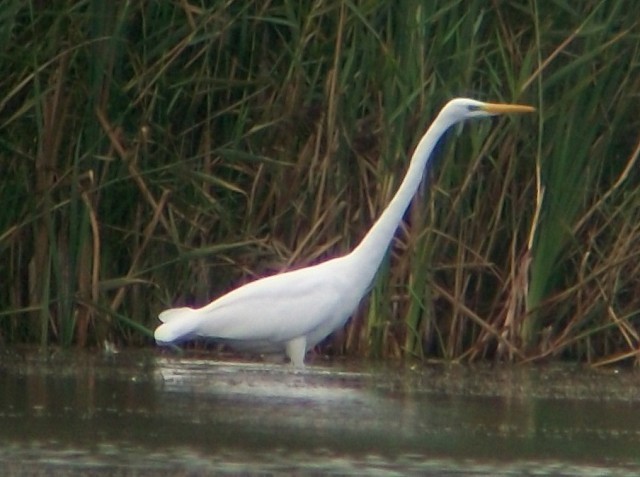
Great White Egret, Idle Valley NR, Nottinghamshire (Photo: Andy Hood)
The only Black Kite reported was over Chichester (West Sussex) on 18th. Following last week's male Red-footed Falcon over Stoke Newington Reservoir (London), there was a female over there on 16th. Immature males were then over Collard's Lake (Kent) and Dunkirk (Kent) on 18th.

Red-footed Falcon, Stoke Newington Reservoirs, Greater London (Photo: Mark Pearson)
The only Spotted Crakes this week were at Trimley Marsh (Suffolk) on 18th–22nd and Unstead Sewage Works (Surrey) on 21st–22nd.
There were surprisingly few new American Golden Plovers reported. The adult remained on North Ronaldsay (Orkney) to 22nd, with others at Fishbourne (West Sussex) briefly on 16th, Rosslare (Co Wexford) on 18th and at Carrahane Strand (Co Kerry) on 20th. Juveniles were reported from Pilmore (Co Cork) on 17th and on the Cashen estuary (Co Kerry) on 19th–21st.
The influx of Buff-breasted Sandpipers continued, with six at Tacumshin (Co Waterford) on 16th, and four up to 21st. Groups of three were at Myroe Levels (Co Londonderry) on 16th–19th, on St Agnes and St Mary's (Scilly) on 21st–22nd and on Tiree (Argyll) on 17th. Twos were on Fair Isle (Shetland) on 18th (with one to 20th), South Uist (Outer Hebrides) on 17th–18th and Achill Island (Co Mayo) to 18th. Other singletons were then at the Butt of Lewis and Barvas, Lewis (Outer Hebrides), Foula (Shetland), Davidstow Airfield (Cornwall) — with two Dotterel — Northam Burrows (Devon), L'Ancresse Common (Guernsey), Loop Head (Co Clare), West Kirby (Cheshire), Port Charlotte, Islay (Argyll) and Loch Fada, Benbecula (Outer Hebrides).

Buff-breasted Sandpiper, Myroe Levels, Londonderry (Photo: Derek Charles)
Buff-breasted Sandpiper, Davidstow Airfield, Cornwall (Film: camelbirder).
Numbers of Pectoral Sandpipers also remained high, with singles at 29 well-pread sites. There were two at Lough Beg (Co Londonderry), Paxton Pits (Northamptonshire), North Ronaldsay (Orkney), Freiston Shore (Lincs) and Rahasane Turlough (Co Galway), with five at Loch Fada, Benbecula (Outer Hebrides) and an incredible seven at Tacumshin (Co Waterford).

Pectoral Sandpiper, Peninerine, S. Uist, Outer Hebrides (Photo: Steve Duffield)
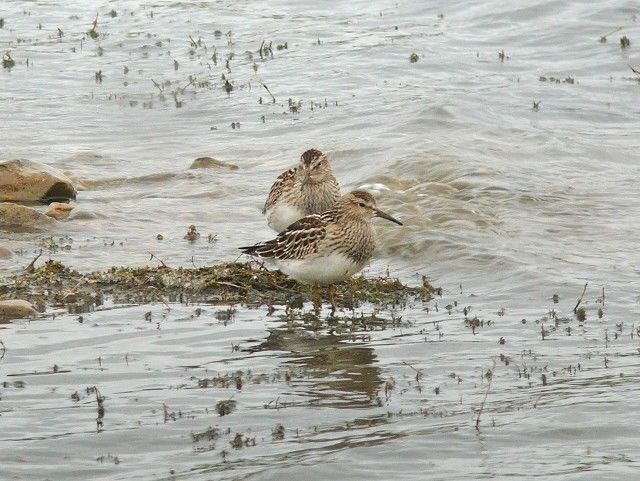
Pectoral Sandpiper, Paxton Pits NR, Cambridgeshire (Photo: Simon West)
An adult White-rumped Sandpiper was at Oare Marshes (Kent) on 16th–22nd, with Irish birds including an adult at Black Rock Strand (Co Kerry) on 20th–21st and juveniles at Blennerville (Co Kerry) on 17th and Pilmore (Co Cork) on 19th. The only Baird's Sandpipers were also in Ireland, at Tacumshin (Co Wexford) on 18th–22nd, at Black Rock Strand (Co Kerry) on 19th and at Annagh Head (Co Mayo) on 20th.

White-rumped Sandpiper, Oare Marshes NR, Kent (Photo: Phil Wallace)
Other Nearctic arrivals were a Lesser Yellowlegs at Achill Island (Co Mayo) again on 19th and another at Kildonan, South Uist (Outer Hebrides) on 18th–19th. The Spotted Sandpiper remained at Porth Hellick, St Mary's (Scilly) to 22nd with new juveniles at St Ives (Cornwall) on 18th — identified from photographs — and at Turf (Devon) on 20th–22nd.

Lesser Yellowlegs, South Uist, Outer Hebrides (Photo: Steve Duffield)

Spotted Sandpiper, St. Mary's, Scilly (Photo: Martin Goodey)
There was just the one Semipalmated Sandpiper, at Ballylongford (Co Kerry) on 18th, and the Long-billed Dowitcher was again at Connah's Quay (Clwyd) on 20th, with a new bird at Truska (Galway) on 17th. In the east, a possible Hudsonian Whimbrel was seen off Southwold (Suffolk) on 19th, an intriguing record.
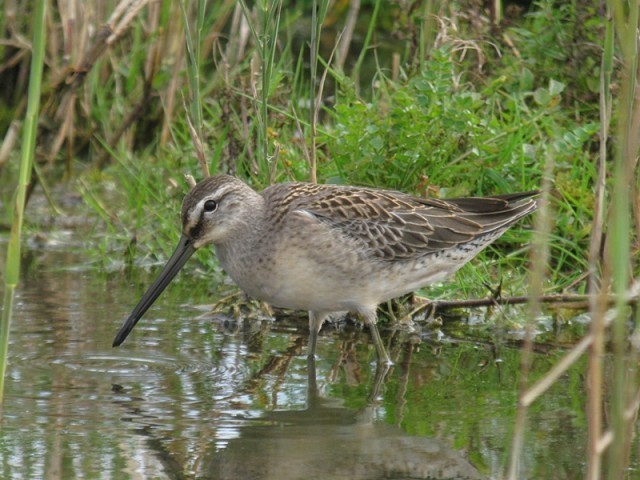
Long-billed Dowitcher, Ballyconneely, Galway (Photo: Dermot Breen)
The Red-necked Phalarope remained at Carr Beds (Cumbria) to 16th, when it was thought to have been taken by a Sparrowhawk, with the only other at Fairhaven Lake (Lancashire) on 17th–20th. Grey Phalaropes were seen at various seawatching and coastal sites in Cornwall, Glamorgan, Dorset, Co Cork, Norfolk, West Sussex, Scilly, Anglesey, with eight past Pendeen (Cornwall) on 16th. Inland birds included two at Chew Valley Lake (Somerset) to 20th, two at Northam Burrows (Devon) to 19th and singles at Upton Warren (Worcestershire) to 21st, Eglwys Nunydd Reservoir (Glamorgan) to 20th and Skinflats Lagoons (Forth) on 19th–22nd.
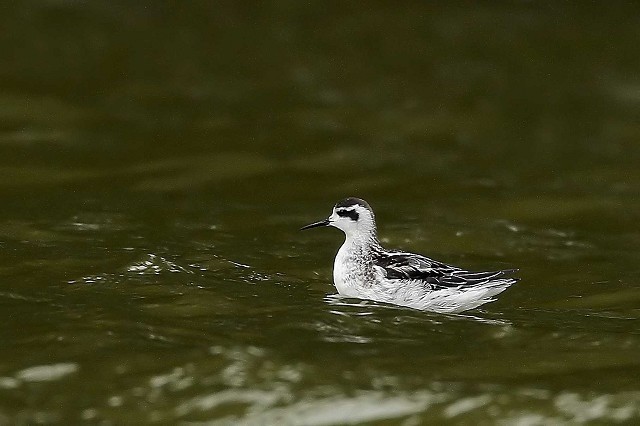
Red-necked Phalarope, Fairhaven Lake, Lancashire (Photo: Pauline Greenhalgh)
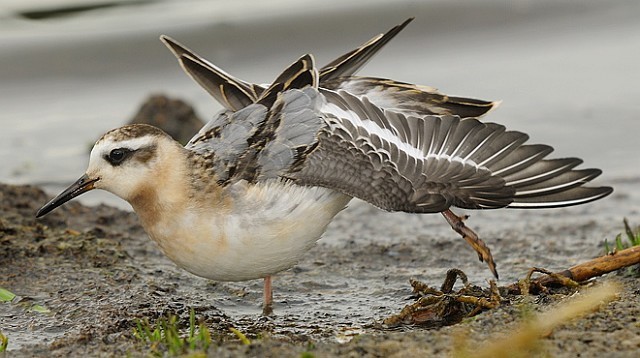
Grey Phalarope, Skinflats Lagoons, Forth (Photo: Mike Thrower)
Tacumshin's great autumn continued with a Wilson's Phalarope there on 16th–19th, with others still at Grove Ferry (Kent) to 22nd, Great Pool, Tresco (Scilly) to 16th and a new bird at Kilcoole (Co Wicklow) on 22nd.

Wilson's Phalarope, Tacumshin, Wexford (Photo: Niall Keogh)
Winter must still be a way off, though, as white-winged gulls are still scarce. Both Glaucous and Iceland Gull were seen around Cobh (Co Cork), with other Glaucs at Minsmere (Suffolk), Whiting Bay and Ferry Point (Co Waterford) and Youghal (Co Cork). The only other Iceland Gull was at Burrafirth, Unst (Shetland) on 19th. The American Herring Gull was reported again at Blennerville (Co Kerry) on 19th and several Ring-billed Gulls were reported, at Christchurch Harbour (Dorset) on 16th, Portrush (Co Antrim) again on 18th, Kinneil Loch (Forth) on 18th, Westcliff-on-Sea (Essex) again on 18th, Prescot Reservoir (Lancashire) again on 22nd and at Dunbeg (Argyll) on 22nd.
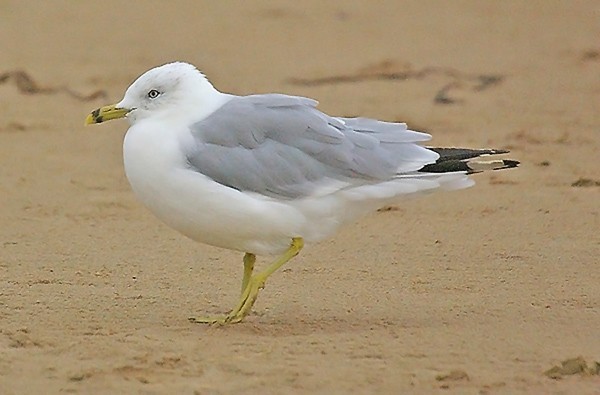
Ring-billed Gull, Portrush, Antrim (Photo: Derek Charles)
Passage of Sabine's Gulls was also thin, with records of singles past Lancashire, Cheshire, Cornwall and Dumfries & Galloway. Up to four were seen past Rhos Point (Conwy) on 16th and Hilbre Island (Cheshire) on 17th with nine past Strumble Head (Pembrokeshire) on 16th.

Sabine's Gull, Wigtown, Dumfries & Galloway (Photo: Alyn Chambers)
Rutland Water (Leicestershire) continued to hold both Whiskered Tern and White-winged Black Tern to 16th, with the only other Whiskered Tern a juvenile at Inner Marsh Farm (Cheshire) 18th–22nd. There were a few juvenile White-winged Black Terns, though, with a report from Loch of Skail (Orkney) on 19th, one at Newton Pool (Northumberland) on 21st–22nd and one still at Cresswell Pond (Northumberland) to 18th.

Whiskered Tern, Inner Marsh Farm RSPB, Cheshire (Photo: Steve Round)
Both of the regular Snowy Owls were reported, with the female at Blacksod (Co Mayo) to 21st and the male at Mangurstadh, Lewis (Outer Hebrides) on 17th.
Wrynecks were still widespread, but all now appear to be in southern counties. Apart from one still at South Gare (Cleveland) to 17th, the furthest north was one at Heanor (Derbyshire) to 16th. The only inland birds were at Lutley (West Midlands), Wendover (Buckinghamshire) and Wanstead (London).
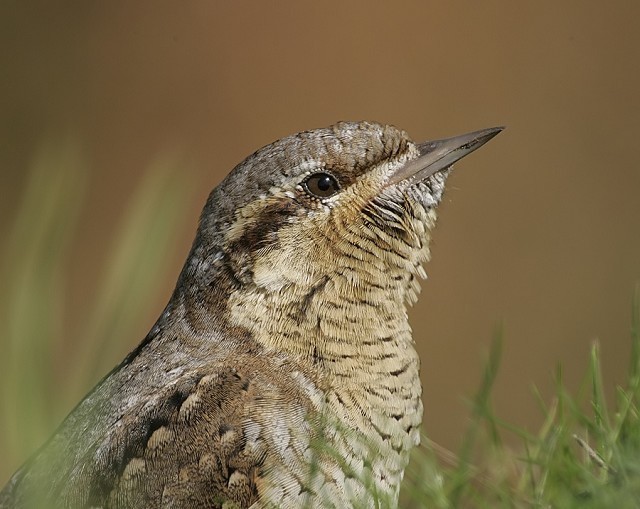
Wryneck, Wendover, Buckinghamshire (Photo: Dave Hutton)
There was a single Hoopoe, predictably in private garden at Kingston (Kent) on 16th. Following a Red-rumped Swallow over Sway (Hampshire) on 16th, one was briefly at Lodmoor (Dorset) on 18th.
Scarce pipit passage seems to have not yet started yet, with reports of a Tawny Pipit calling over Sennen (Cornwall) on 21st and a Richard's Pipit at Barmston (East Yorkshire) on 19th. An elusive Red-throated Pipit was at Polgigga (Cornwall) on 17th and then possibly the same later over Porthgwarra, with another report from Clodgy Point on 18th. Apart from a possible at Thornham (Norfolk) on 16th, Citrine Wagtails were in the north, at Rousay (Orkney) on 16th, Burra Voe, Yell (Shetland) on 20th and on Fair Isle (Shetland) on 22nd.

Citrine Wagtail, Burra Voe, Yell, Shetland (Photo: Dougie Preston)
The Woodchat Shrike remained at Three Castles Head (Co Cork) to 21st, with far fewer Red-backed Shrikes now reported. The photogenic male was at Winterton Dunes (Norfolk) to 21st but other early-week birds were in the southwest, with three in Cornwall and one in Devon. The 21st saw a small east-coast arrival, though, with birds at Spurn (East Yorkshire) and Humberston Fitties (Lincolnshire), and one also at Durlston Country Park (Dorset).

Red-backed Shrike, Kynance Cove, Cornwall (Photo: Steve Bury)
Marsh Warblers were still scarce, with just two on Fair Isle (Shetland) on 20th. There are also fewer Barred Warblers around now, with all reports coming from north and west Scotland and the east coast (Norfolk and East Yorkshire).

Barred Warbler, Holme NOA, Norfolk (Photo: Sandra Solly)
Hippos had also departed, with the only Icterine Warbler on St Agnes (Scilly) on 16th and the only Melodious Warbler at Norwick, Unst (Shetland) on 19th–20th.

Melodious Warbler, Norwick, Unst, Shetland (Photo: Robbie Brookes)
The Greenish Warbler remained on St Mary's (Scilly) to 18th and the Arctic Warbler remained at Holme (Norfolk) to 16th. What were arriving, though, were Yellow-browed Warblers. Arrivals were mostly in the north from 20th, including up to five on Fair Isle (Shetland), with others on Isle of May (Fife), Sumburgh (Shetland), two on North Ronaldsay (Orkney), Haroldswick, Unst (Shetland), Otterswick, Yell (Shetland), two at Collieston (Aberdeenshire), Girdleness (Aberdeenshire) and Fetlar (Shetland). The only birds to make it further south were at Flamborough Head (East Yorkshire) on 22nd and in Portsmouth (Hampshire) on 22nd.
A juvenile Rose-coloured Starling at St Ives (Cornwall) on 17th was probably the same as at Land's End on 22nd. On the chat front, up to two Bluethroats were on Fair Isle (Shetland) on 19th–20th with another at Scatness (Shetland) on 20th–22nd. The only Thrush Nightingale was one (again?) on Foula (Shetland) on 16th. Considering other arrivals, it was surprising to see so few Red-breasted Flycatchers, with only three seen, at Quendale (Shetland) on 18th, Isle of May (Fife) on 21st and Sumburgh (Shetland) on 21st.
A very attractive addition to the autumn was a small arrival of Hornemann's Arctic Redpolls on Shetland over 19th–21st. Singles were at West Sandwick, Yell; with Twite at Burrafirth, Unst; at Haroldswick, Unst; and on Mousa, with two on Unst and three on Fair Isle on 20th. Orkney managed one, on North Ronaldsay on 20th–21st.
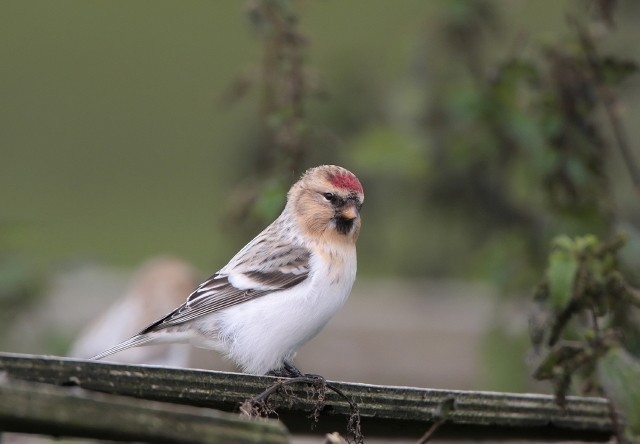
Arctic Redpoll, Norwick, Unst, Shetland (Photo: Robbie Brookes)
Common Rosefinches were still in evidence, with most on Shetland: fours were on Foula on 16th, on Fair Isle on 21st and on Fetlar on 22nd. In the south, one was at Lower Moors, St Mary's (Scilly) again on 16th and one was on Bardsey (Gwynedd) on 16th–20th.

Common Rosefinch, Bardsey Island, Gwynedd (Photo: Steve Stansfield)
Small pockets of Ortolan Buntings were still around, with Cornish birds at Polgigga on 17th, in Nanquidno Valley on 18th and at Land's End on 21st. Up to three were then on Portland (Dorset) on 21st with another on Hengistbury Head (Dorset) on 20th and one on the Garrison, St Mary's (Scilly) on 21st. Scottish birds included one on Fair Isle (Shetland) on 19th–20th and the Isle of May (Fife) on 22nd, with one also at Le Long Cavaleux (Guernsey) on 22nd.
As if we haven't mentioned Fair Isle enough, we just have to throw in a couple of impressive counts: 160 Lapland Buntings on 19th and 200 Brambling on 20th. Just to try to balance it, Spurn (East Yorkshire) can also produce excellent migration, and a count of 1,008 Linnets on 21st was their highest autumn count since 2001.
Photo of the Week: 16th—22nd September
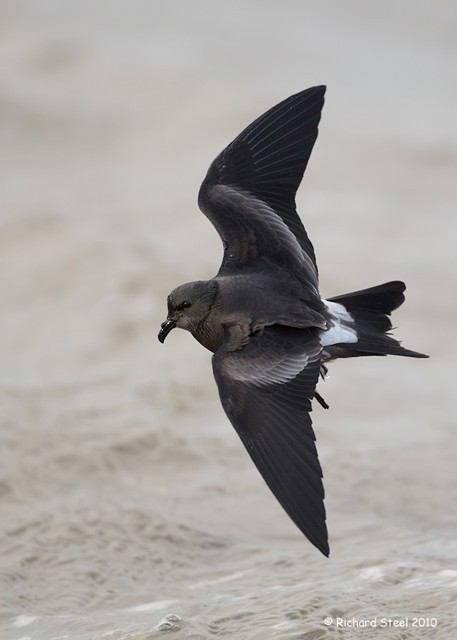
Leach's Storm-petrel, North Wirral, Cheshire (Photo:
Richard Steel)
At this time of year, prolonged northwesterly gales can push large numbers of Leach's Storm-petrels in to the shores of the Irish Sea, especially the area around Liverpool Bay. The epicentre of this activity tends to be the Wirral Peninsula, around which several hundred of these small birds can pass in a single day. This week, several bird photographers have braved the elements to photograph the latest of these phenomena. Unfortunately, the extreme weather conditions that bring the storm-petrels in to shore also make photography a real battle, with both camera and operator being blasted by salt-spray and sand. Our pick of the uploads is a classic image by Richard Steel, who froze his subject as it banked towards him just centimetres above the water. Richard's shot outlines the dark bird perfectly against the pale sea, yet still captures the subtleties of the facial and plumage details. Under such challenging conditions, this really is an accomplished exposure.
Other notable photos

Gannet, Fife Ness, Fife (Photo:
John Anderson)

Lilac-breasted Roller, South Africa (Photo:
Paul Hillion)

Blue-cheeked Bee-eater, Qatar (Photo:
John A Thompson)
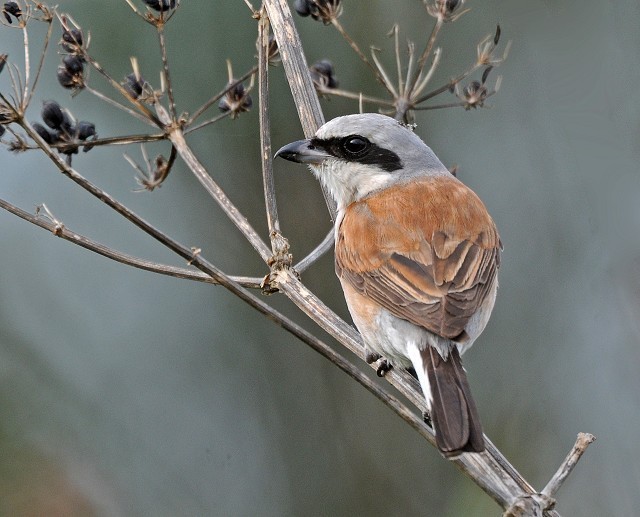
Red-backed Shrike, Winterton Dunes NNR, Norfolk (Photo:
Jon Evans)

Black-tailed Godwit, Colin Best NR, Guernsey (Photo:
Chris Bale)

Wryneck, Holland Haven CP, Essex (Photo:
Mark Coventry)

Golden Plover, Landguard NR, Suffolk (Photo:
Chris Mayne)
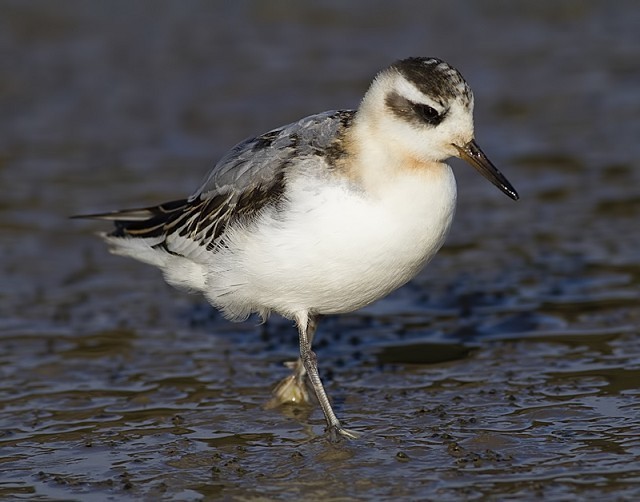
Grey Phalarope, Skern, Northam Burrows CP, Devon (Photo:
Rob Cross)

Knot, Snettisham RSPB, Norfolk (Photo:
David Whistlecraft)

Goldcrest, undisclosed site, Warwickshire (Photo:
Tom Melton)

Common Gull, Salthouse, Norfolk (Photo:
Matt Latham)

Sparrowhawk, North Killingholme, Lincolnshire (Photo:
Graham Catley)

Glossy Ibis, Avonmouth, Somerset & Bristol (Photo:
James Packer)

Northern Wheatear, Hartland Moor, Dorset (Photo:
Simon Johnson)
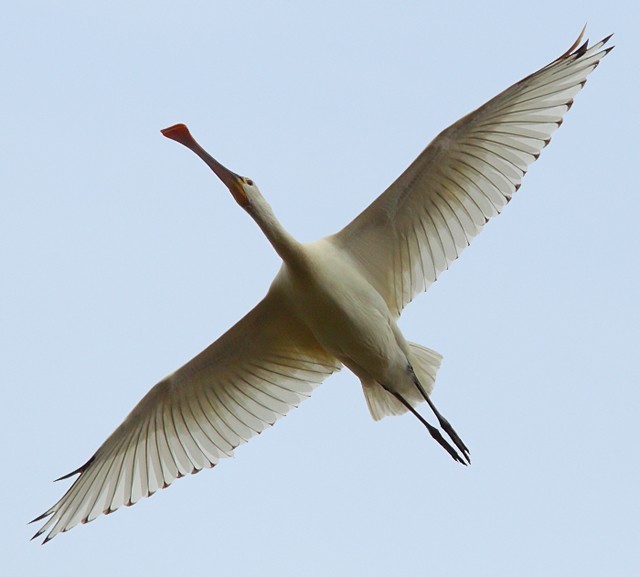
Spoonbill, Oare Marshes NR, Kent (Photo:
Steve Ashton)

Black Tern, Grimley New Workings, Worcestershire (Photo:
Carl Day)

Raven, Maidens, Ayrshire (Photo:
Mark Hope)

Common Redpoll, Norwick, Unst, Shetland (Photo:
Robbie Brookes)

